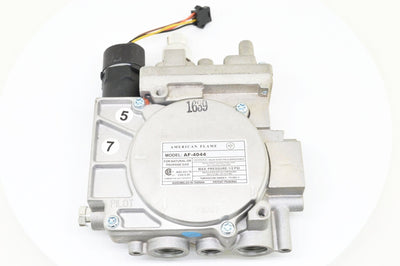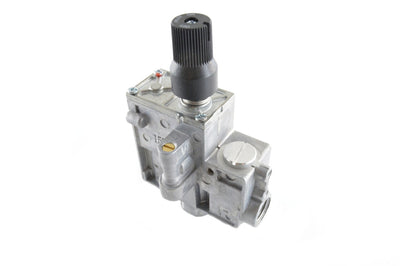Will A Gas Fireplace Operate During A Power Failure
Will A Gas Fireplace Operate During A Power Failure?
Have you ever wondered if your cozy gas fireplace will keep burning when the power is out? With more than 11 million natural gas fireplaces in North America, they are a popular way to warm our homes.
In this article, we're going to delve into the specifics of how different types of gas fireplaces function during power outages, including essential safety tips and maintenance advice.
Keep reading to ensure you're prepared for any situation!
Key Takeaways
- Gas fireplaces can work during a power outage. It depends on their ignition type.
- Fireplaces with millivolt systems or standing pilot lights don't need electricity to burn.
- Some electronic ignition fireplaces have a battery backup for use in blackouts.
- Regular fireplace checks make sure it's safe to use, even without power.
- A gas stove isn't a good substitute heat source due to Carbon Monoxide risks.
Understanding Gas Fireplaces
Gas fireplaces serve as a cozy and reliable source of warmth, especially during the cold winter months. They come equipped with various ignition systems that determine whether they can function during a power outage or not.
Generally, there are two types of gas fireplaces - those with millivolt ignition systems and others with electronic ignitions.
Fireplaces that employ a millivolt ignition system utilize a thermocouple and thermopile to generate the voltage needed for operation: this means they maintain functionality even in instances of electricity loss like power outages.
On the other hand, electronic ignition fireplaces require electric power; hence can be susceptible to shutdowns when there's an electrical failure unless supported by battery backup modules.
It is also worth noting some gas fireplaces operate using standing pilot lights which stay on continuously without needing electrical power. More advanced models feature IntelliFire or IntelliFire Plus ignition systems that include battery backups for lighting pilots amidst an outage.
Safety measures play an equally significant role when it comes to operating these appliances -- frequent inspections are highly recommended to ensure your fireplace remains safe for use in both normal conditions and situations involving power cuts.
Will a Gas Fireplace Work in a Power Outage?
Yes, a gas fireplace can still operate during a power outage due to its self-contained ignition system which doesn't rely on electricity. The process may slightly differ based on the type of your fireplace's ignition—whether it's a standing pilot light or an electronic ignite—and we'll explore both options for starting your fire without electricity in this section.
We will also discuss the role of battery backup systems that serve as an emergency solution powering your fireplace during blackouts.
Starting a Gas Fireplace Without Electricity
Starting a gas fireplace without electricity can be an essential skill, especially during power outages. Here's a simple step-by-step guide:
- Locate the control panel on your fireplace; It usually hides behind the lower louver of your fireplace.
- Switch off the fireplace and wait for it to cool down completely.
- Open the control panel and locate the ignition button or switch.
- Turn the control knob to 'pilot.'
- Push down on the 'ignite' button if you have an electronic ignition system, or light a match and hold it near the pilot light if you have a millivolt system.
- Once lit, keep holding down either the 'ignite' button or control knob for about 30 seconds to ensure that thermocouple has time to heat up so that it can detect the flame.
- Slowly release the button or knob, ensuring that the pilot flame stays lit.
Battery Back Up In an Emergency
In the face of a power outage, a battery backup can be your safeguard. This module will allow gas fireplaces with electronic ignition systems to function without any disruption. By supplying the necessary energy, it enables these fireplaces to operate as they do under regular circumstances.
Crucial for emergency situations, this standby system is often integrated into modern fireplace models featuring an Intermittent Pilot Ignition (IPI). It's wise to ensure batteries are included in your essential emergency kit and checked regularly for optimal performance.
Equipping yourself with this technology will provide warmth and comfort even during unforeseen electrical disruptions.
Two Types of Ignition Systems
We delve into the world of fireplace ignition systems, exploring the two main types - standing pilot lights and millivolts. We'll break down how each operates, their advantages and drawbacks, to help you understand which could be a better choice for your gas fireplace.
Pilot Lights and Millivolts
Gas fireplaces use an efficient and reliable ignition system known as a pilot light. This small gas flame stays lit all the time, heating up the thermopile in your fireplace. Functioning somewhat like a generator, the heat from a continuously burning pilot light keeps your gas valve functioning properly, even during power outages.
Standing pilot lights generate their own electricity called millivolts. Millivolt models don't rely on external electricity to operate because they house both a thermocouple and thermopile which react to heat by producing voltage - this is essentially how millivolts are created.
Once these millivolts of power reach sufficient levels, they stimulate the gas valve to release gas for combustion, hence maintaining operation of standing pilot fireplaces with no need for any electrical outlet or battery back up.
Which Type of Ignition System is Better?
The electronic ignition systems in gas fireplaces hold an edge over standing pilot lights due to their high efficiency. Eliminating the need for a constant flame, these systems ignite only when heat is required, thus conserving energy and reducing gas consumption.
Some fireplace models with this type of system incorporate a battery backup module which allows them to function normally even during power outages.
On the other hand, fireplaces with millivolt ignition systems also boast reliable performance without reliance on electricity. These work through a small current produced by a thermocouple or thermopile heated by the pilot light.
The key advantage here is that as long as your pilot light remains lit, your fireplace can radiate heat amidst power disruptions – no batteries required! This makes millivolts popular among homeowners desiring simplicity and consistency.
However, it's worth bearing in mind that some consider keeping the pilot light always on associated with wastage.
Safety Considerations of Using a Gas Fireplace During Power Outages
Operating a gas fireplace during power outages demands careful attention to safety. First, ensure that your ventilation system is in good working order. Any blockages could cause dangerous carbon monoxide build-up in the absence of an operational blower.
Regular inspection of vents can help prevent such risks and maintain indoor air quality. Second, don't leave your fireplace unattended for long periods especially if you are unsure about its maintenance history or current state.
It's also important to pay heed to potential fire hazards linked with incorrect usage of a gas-based heating source. Avoid placing combustible items close to the heated area and make sure there's ample distance between them and the fireplace unit itself.
Carbon Monoxide detectors are vital safeguards when using any combustion-powered appliance including fireplaces—they should always be installed in homes equipped with these units.
During power outages, systems running on battery backup continue operating effectively, providing necessary protection against this lethal gas.
Lastly, it might seem tempting to use a gas stove if your heating options dwindle during severe weather conditions but resist this temptation as extended usage increases risk of Carbon Monoxide poisoning—a potentially lethal condition caused by inhaling too much Carbon Monoxide fumes produced from incomplete burning of fuel such as natural gas or propane commonly used in residential hearths.
Using a gas fireplace safely under power outage circumstances requires awareness towards handling complex situations confidently—skillsets that homeowners can develop over time through regular practice guided by expert advice.
Maintaining Your Gas Fireplace
Proper care and maintenance of your gas fireplace can ensure it's ready to serve as a comforting heat source during power outages. Dive into the significance of annual servicing, get tips on re-lighting a pilot light, and understand how routine upkeep guarantees your unit's longevity and safety.
Don't wait until an emergency strikes - stay tuned for essential maintenance insights.
Annual Maintenance & Service
Keeping your gas fireplace in optimal condition requires annual maintenance and service. Here are the key steps involved:
- A professional service technician inspects the fireplace for safety and efficiency.
- The pilot light and burner assembly receive a thorough cleaning.
- The thermocouple, a crucial component that measures temperature, is checked to ensure it's working correctly.
- If the fireplace uses millivolt ignition, the thermopile gets inspected. This device, comprised of several thermocouples, opens and closes the gas valve.
- The technician adjusts the standing pilot light, a small gas flame necessary for heat production.
- Fireplace accessories like fans or powervents are examined for wear and tear.
- All other components including valves and gas rates are assessed to guarantee they meet manufacturer's specifications.
Re-lighting a Pilot Light
Re-lighting a pilot light involves several steps that should be executed with care.
- Ensure the gas fireplace is turned off and cool to the touch before starting.
- Locate the fireplace's pilot light assembly.
- Turn the control knob or dial to 'Pilot.'
- Push the control knob or dial in and ignite the lighter near the pilot light opening.
- Keep holding down on the control knob or dial until you see a flame; this could take up to a minute as it allows time for gas to reach the pilot.
- Once you ensure a steady flame, release your hold on the control knob, now turn it to 'On.'
- If the flame goes out when you do this, repeat steps 3 through 6 again.
Heating During an Outage: What to Expect
A power outage can occur anytime, but that does not necessarily mean going without the comfort of a warm home. Gas fireplaces with millivolt ignition systems or those equipped with battery backups will continue to provide heat, even during an electrical disruption.
The gas valve in your fireplace generates its own electricity and uses only a small amount for operation, hence able to perform independently of your home's main power supply.
During outages, fireplaces radiate enough natural warmth to keep a room comfortable. However, if your model has built-in fans or blowers used to distribute heat more evenly across larger spaces, these features may cease working unless they are powered by batteries as well.
Notably too is the functionality of smart thermostats – while these tools offer convenient control under regular circumstances; they might not function in an outage without any alternative power source like a backup battery module.
Dealing with heating during an outage can be smoother than expected when adequately prepared and knowledgeable about how your particular fireplace operates. Therefore it could prove useful acquainting oneself with their system’s characteristics and limitations ahead of time.
Conclusion
Even in the midst of a power outage, gas fireplaces prove to be reliable sources of heat and comfort. They operate effectively irrespective of electricity constraints, thanks to millivolt ignition systems or electronic ignitions with battery backups.
Dependable and efficient, gas fireplaces stand as a beacon of warmth during chilly blackout nights. However, always ensure safety by using a functional CO detector while enjoying your cozy fireplace sessions during power outages.
FAQs
1. Will a gas fireplace work during a power outage?
Yes, specific models like the standing pilot fireplaces and Montigo gas fireplace can operate even during an electrical power outage.
2. How does a millivolt ignition in a gas fireplace work when there's no electricity?
In situations of power loss, the millivolt ignition uses heat from the pilot light to generate millivolts of electricity which can keep the fireplace operational.
3. What type of residential fireplaces will function without power?
Standing pilot fireplaces and some direct vent fireplaces continue operating effectively even without electric supply because they don't rely on electronic ignition systems.
4. Can commercial fireplaces also operate during a blackout?
Yes, many commercial fireplaces are designed with systems like intermittent Pilot Ignition (IPI) or millivolt models that allow them to run during an electrical outage.
5. If my fireplace operates without power, do I still need an emergency kit for outages?
Yes, it is always good to be prepared with essential items such as bottled water, non-perishable food, flashlights and extra batteries in case of extended blackouts.
6. Do all parts of my gas-operated hearth product function in absence of electricity?
The basic functionality remains but accessories like blower fans used for circulating warm air might not work due to their reliance on electric supply.
← Older Post Newer Post →




























